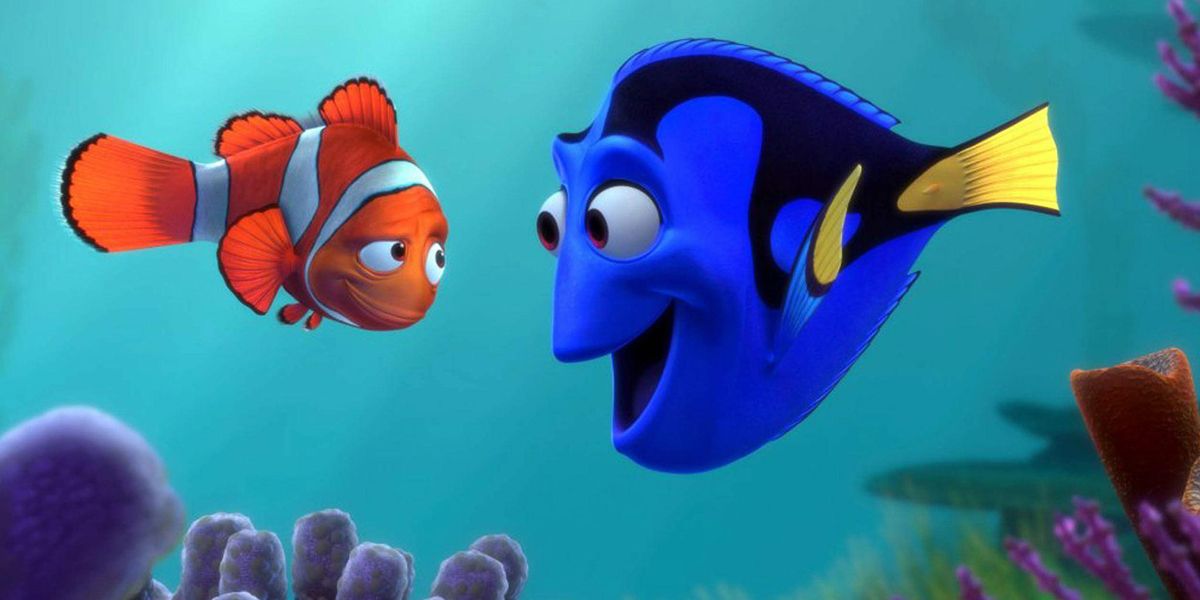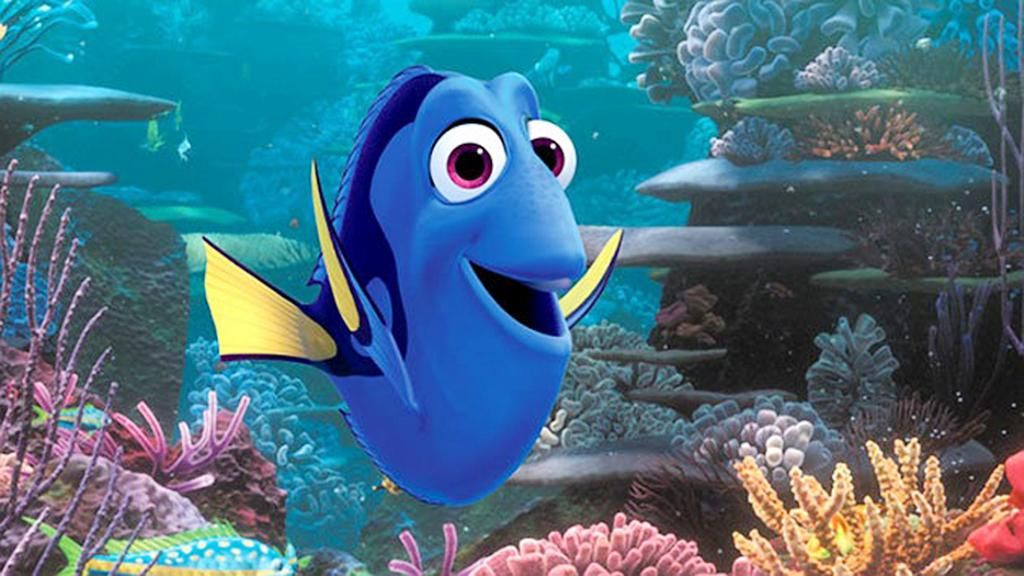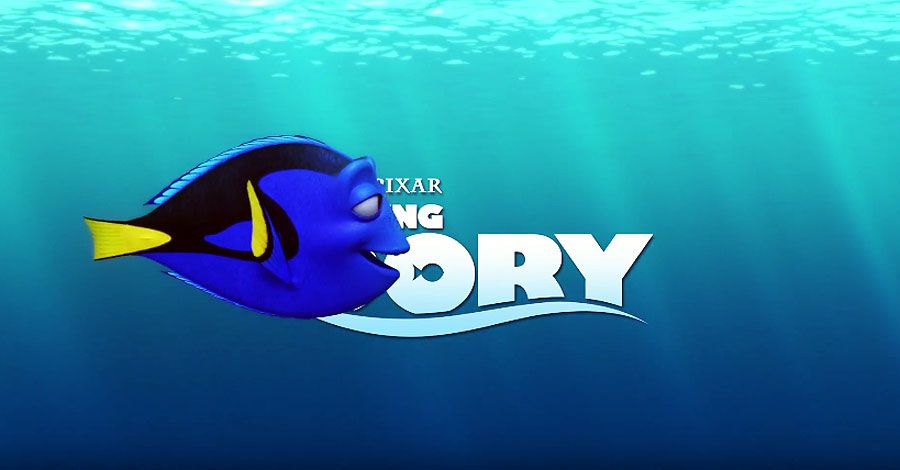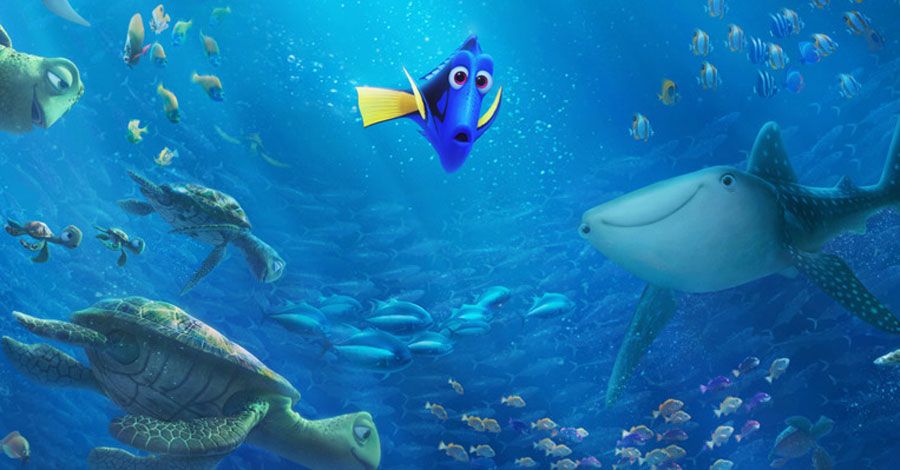Contrary to traditional Hollywood franchising logic about profit margins and bottom lines, “Finding Dory” filmmaker Andrew Stanton says at Pixar sequels are made when the right filmmaker has the right idea that comes together at the right time, and no sooner.
Stanton’s own experience is a case in point. When “Finding Nemo,” which Stanton directed and co-wrote, was released in 2003, the animation studio was already acclaimed for its engaging emotionally effective creative movies that were also crowd-pleasing, box office powerhouses. Yet direct sequels were not automatically placed in the development pipeline, or announced with built-in release date.
RELATED: Finding Dory Swims Past $1 Billion at Global Box Office
Indeed, “Nemo” would have most likely stood on its own, content with its well-earned place in moviegoers hearts and its status as an Academy Award winner for Best Animated Film. Except for the fact that, while revisiting the film for its 3D release in 2012, Stanton – who, after reserving the right to say yea or nay to a follow-up, had resisted gentle inquiries about sequel willingness from Pixar’s parent company Disney over the years – was struck with a notion he couldn’t shake. Nemo’s own journey had satisfactory end, but the film's fan-favorite sidekick Dory had a story that needed completing. That thought resulted in “Finding Dory,” a 13-years-later sequel that was met last summer with critical fanfare and audience adoration on par with the original.
With “Finding Dory” making its bow on Blu-Ray 3D, Blu-Ray, DVD and On Demand Nov. 15, Stanton – who also helped devise the premise for “Toy Story 4,” a sequel he reveals was less unexpected than one might imagine – took CBR through the creative process at Pixar that determines whether its hit films are ultimately followed up.
CBR: You let the idea for “Finding Dory” incubate on its own pace. Pixar’s such a special place for filmmaking: what are your thoughts and philosophies there about sequels? We’ve been through a recent phase of sequels to earlier Pixar movies, and I’m curious how you all look at and approach things when it comes to, “Should we?” “What’s the right idea?” “When should we?” Can you give me the little insight on the thinking there?
Andrew Stanton: There’s no committee, there’s no process, there’s no planning. It literally is to the whim of the film of the original filmmaker. And that was intentional, so that it could be as pure as we could. People forget the third film we ever made was a sequel. So it’s not like we became some successful studio and then started to cash in.
What we did is, we learned from our first mistake on “Toy Story 2,” which was we made that for the wrong reasons. We made it for economic reasons. Essentially, we thought we should do it with a lesser crew and for less money. Then, a year out from its release, we realized it was going to be bad, and we didn’t want that to be who we were. We completely started from scratch and put all hands on deck and made it for the right reasons.
It nearly killed us, but it taught us that from now on, if we ever make a sequel, it will only be that it’s inspired from an actual artistic inspiration from the filmmaker, or at least it’s endorsed by the original filmmaker, and they are inspired enough to want to let somebody else do it. We try to keep it as artist-pure as the originals, as far as its origins.
We really don’t look at it from the outside-in, like the rest of the world, as if there’s some map. The truth is, we try to come up with it on the front end of like, “Oh, wouldn’t it be nice to do an original, then a sequel, a couple originals, then a sequel, and just spread it out?” But what we can’t control is how quickly those stories develop, or how long those stories take to crack. Because they become their own things, like raising children. Some are more ornery and resistant than others to cooperating.
What we don’t do is ever shortchange the story. So sometimes, because it needs more time to bake, we end up with a couple years where there’s more sequels involved than originals. So people start reading patterns from the outside in without knowing the knowledge of what’s really going on on the inside.
On the inside, we’re just cooking these meals and trying to make them at the right order, because they all came from the heart. They all came from the artists’ brain, but we can’t control how quickly they develop.
Once the creative idea for “Finding Dory” had taken root in your mind, tell me about the joys and the pains of bringing this particular sequel to life. What were the thrills along the way, and what were the obstacles?
The interesting thing about “Dory” is that it didn’t come from a desire to further the franchise. There was no pressure from the outside to make it. As a matter of fact, if anything, people forgot. It was because I finally saw the film, because it was being released in 3D, and almost like a parent, I had come up with Dory. She was one of my kids, and I felt she was unresolved. I felt she was still broken on the inside, the same way that I had constructed her to have a sort of tragic sense of loss and abandonment in the first film. I felt like she deserved to be resolved and be at peace.
So it was almost like a parental obligation that I wanted to finish her story. So I don’t see it as a “’Finding’ series,” even though, if somebody else comes up with a great idea, whatever. But my artistic desire was to wrap a nice bow around Dory and let her be happy, fully.
So that’s what got me into it. What I didn’t anticipate was how difficult it would be to take this very successful sidekick, who was built to be the ultimate sidekick, and make her a main character. Most of the time, the reason that main characters are the least interesting in films is because they have to have the most complexity, and they have to have the most dramatic issues going on that you really will invest in. So you’re just forced to get a little more serious with them. And that’s not who she is. She’s somebody that makes everybody else laugh, and is sort of the brunt of jokes, or the executor of jokes.
So it was really hard work to adjust her so that you didn’t lose the spark of what made Dory this effective character, and positive character, and put her in the spotlight. And also, the biggest one was that she had short-term memory loss. I did not realize until I was dealing with it, if she doesn’t have the ability to remember how she felt yesterday, she can’t express how she’s changing. You actually are reliant on that when you’re telling a story for people to sense that a main character’s going through any kind of growth.
It’s so easy for me to say that right now in a simple sentence or two. It took me a year and a half with the smartest people to deduce that’s what the problem was.
And now, after what I assume is ultimately a very creatively satisfying experience, do you have the sense of what the next thing is that you want to do? Have you got it in your sights? Or are you going to let it find its way to you, in some sense?
Oh, there’s always multiple things going on. It’s almost like a cook in a kitchen. There’s some things where they’ve been on the back burner for almost 15 years now, some of my ideas. There’s some ideas that came yesterday. What you can’t predict is which things will come to a boil first. So I’ve got plenty to work on and write about. I just don’t know what’s going to come forward first.
You have a hand in “Toy Story 4” and the genesis of that project – another movie, much like “Finding Nemo,” where you wouldn’t expect a sequel idea to propose itself easily.
That’s an assumption that I wouldn’t make. When we came up with “3,” we came up with a larger story that would keep going. So there was never a desire to close it off at “3.”
What was the creative impetus that got you all excited about four? Can you speak to that charge that got you electrified?
Nope! It was a really good idea that I can’t tell you.
Did everybody recognize it right away? Did everybody say, “Oh my goodness – of course that’s what we’re going to do next?”
No. There was a piece that John couldn’t drop and that I couldn’t drop, and that eventually morphed into other things. It’s different for every film. There’s always something, something that, like, you can’t drop. Either it’s a huge idea, or it’s a small idea that grows into a huge idea. But it tends to be that thing that no matter how much you distract yourself and do other things, you can’t stop thinking about it.
Big picture, what are the goals that you’ve set for yourself in the years ahead? What kinds of benchmarks are you hoping to reach, creatively, professionally, personally?
I think I’m showing my age. I’ve been very lucky. I’ve had a lot of exposure and success. I’ve gotten to make whatever has been my ideas, and I think that’s all I really want to do is just be able to make sure I can keep having the opportunity to execute the ideas I have.
That’s a real privilege, and it goes away fast, even if you’ve been an established artist for a long time. So I don’t take that lightly. So I just hope I have enough success that I can keep making the things I want to make.
Just keep swimming, right?
Basically – you got it!




